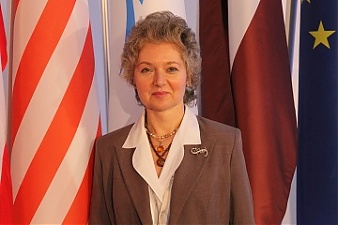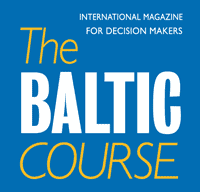Analytics, Direct Speech, Forum, Investments
International Internet Magazine. Baltic States news & analytics
Thursday, 08.05.2025, 05:33
Foreign Direct Investment and Business Development
 Print version
Print version |
|---|
Many
empirical studies show that long-term economic growth can be driven primarily
by fixed investment that is influenced mostly by national saving. In particular,
Figure 1 highlights the underlying trend in the relationship between fixed
investment and GDP is positive for the Latvian economy. It is necessary to encourage
investment activity as one of the driving forces of achieving sustainable and
inclusive economic growth in Latvia.

Fig.1.
Investment and GDP Growth in Latvia
Source. Eurostat data.
Empirical
evidence revealed the existence of this relationship for other EU countries as
well. For example, substantial differences in levels of gross fixed capital
formation and real GDP per capita between Latvia, Estonia, Hungary, Ireland on
the one hand and the United Kingdom, Italy, Luxembourg on the other hand indicate
that the higher investment activity, the greater real GDP per capita growth
rate, as depicted in Figure 2. Relative to these countries of Old Europe such
a regularity can also be
considered for Spain, the Netherlands, the USA, France, Finland, Austria, the
Czech Republic, Cyprus, Croatia,
Slovakia, Romania. Besides, this positive trend is also observed
regarding Canada, Norway, Japan, and Sweden. Nonetheless, despite the cross-country differences in fixed
investment levels between Sweden, Japan, Belgium, Denmark, Germany, Italy, and
Luxembourg, percentage of real GDP per capita remains the same in these
countries. Similarly, such variances there are between Norway and the United Kingdom. Meanwhile, another
trend explicitly appears, when some countries like Italy, Luxembourg, Greece,
Spain, the Netherlands, the USA, Portugal, Cyprus, especially Bulgaria, Malta,
Slovenia, and Poland in terms of a lower gross fixed capital formation
percentage achieved a much higher real GDP per capita percentage in comparison
with Canada. Taking into account the cross-country differences in rates of
gross fixed capital formation and real GDP per capita it should be noted that fixed
investment is not the only or main source generating economic growth as it is
shown in the empirical studies in this area.

Fig.2.Investment and Real GDP per capita, 2018
Source. Eurostat data.
Under the
conditions of increasing openness of national economies and international
competition foreign direct investment (FDI) became a key driver of
competitiveness and business development and consequently can significantly contribute
to long-term sustained economic growth. It is worth noting that from the
standpoint of investors’ future intentions and possible investment trends
dynamics, a crucial factor driving FDI decisions is investor confidence.
According to the data of the Global Business Policy Council in 2019 the highest
FDI confidence index is in the
USA (2.10), Germany (1.90), and Canada (1.87). In addition to Germany, among
European countries the top 10 on this index includes also the United Kingdom in
the rankings (4), France (5), Italy (8). As shifts in sectoral FDI flows especially
to high-tech manufacturing in developed markets show, FDI can affect economic
performance across industries and firms to a greater extent through
international technology transfer and R&D projects.

Fig.3. R&D Expenditure in the Business
Enterprise Sector, % of GDP, 2017
Source. Eurostat data.
However,
such an indicator of
increasing the stock of knowledge as R&D expenditure performed within
the business enterprise sector in the EU indentified challenges for promotion
of knowledge-based long-term economic growth in countries of New Europe, as
illustrated in Figure 3. The
highest R&D intensity as a percentage of GDP in the EU is achieved in
Sweden (2.42%), Austria (2.22%) relative to the EU average – 1.36%. Hence,
Sweden and Austria are innovation leader and strong innovator, respectively. While
this indicator in Bulgaria is 0.53%, Slovakia – 0.48%, Croatia – 0.42%,
Lithuania – 0.32%, Romania – 0.29% and the lowest indicator is in Latvia –
0.14%.
The fastest growing economies in Asia have benefited from foreign direct investment (FDI)-oriented
innovation activity, increasing substantially their innovative capacities that
will be a crucial determinant of global competitiveness. Figure 4 displays that
real GDP growth rate in South Korea, Singapore, Hong Kong, and Thailand considerably
exceeded the level of this indicator in the Euro area.

Fig.4. Real GDP Growth
Source. Eurostat,
UNCTAD data.
Moreover, according to UNCTAD data the Asia-Pacific region received
significant especially greenfield FDI inflows to the manufacturing and services
sector. In particular, China becomes an investment destination for FDI in high
value-added industries and Thailand aims to attract more FDI in
technology-based manufacturing and services. By data of ASEAN Investment Report
(2018) the ASEAN telecommunication industry will have continuing and increasing
FDI inflow in the development of ICT infrastructure in the long run. Besides, East
Asia and the Pacific become one of the most improved regions with their
competitiveness performance upward trend (+1.78%) in the world. Economies of this
region perform better than Europe and North America on the Product market and
the Financial system pillars of the Global Competitiveness Index. In such
dimension as the ICT adoption pillar the East Asia and the Pacific region economies
actually have achieved a similar level of performance like Europe and North
America. While the positive percentage change of this region performance in ICT
adoption (4.4%) is greater than the pace of change (3.7%) in Europe and North
America. Furthermore, in terms of changes in competitiveness performance there
are also cross-regional differences in the Innovation capability pillar, most
notably for economies of East Asia and the Pacific with significant improving
(+2.0%) versus the unchanged trend on this pillar in Europe and North America. These
disparities indicate that competitiveness of the East Asia and the Pacific
economies is driven mostly by the progress in ICT adoption, financial system,
innovation capability and improving macroeconomic stability that contributed to
a favorable investment environment. Despite sharp declining global FDI flows mainly in developed countries and
transition economies in 2018, nevertheless according to the annual data of
UNCTAD, FDI inflows to developing Asia rose by 4 percent to $512 billion, especially
in China, Hong Kong (China), Singapore, Indonesia as well as India and Turkey. Receiving
39 percent of global FDI inflows, Asia became the largest region with a growing
share of FDI in the world.
The overall positive trend also appears in the relationship
between shares of extra-European FDI inflows and EU GDP. More specifically,
this effect reflected in a steady and higher growth dynamics for the Netherlands, Spain, Italy, France,
the United Kingdom, and Germany. Noteworthy, the highest percent of EU FDI is concentrated
in science-intensive industries like manufacture of computer, electronic
and optical products as well as in services sectors in terms of number of
foreign firms and share of foreign assets in the sector. Besides, these
industries and sectors, especially R&D, IT services, financial services and
insurance have the highest number of mergers and acquisitions deals and also the
highest concentration of foreign investment as to the value of the greenfield
projects. At the same time, the growing share of foreign assets is greater in
the sector of mining and quarrying. Another
peculiarity of FDI in the EU is
high inward FDI stocks, mainly in small countries as Luxembourg, Malta, Cyprus,
the Netherlands, Ireland, and Belgium. Furthermore, namely, the Netherlands and Cyprus, like Germany, show
maximum positive changes in total extra-EU inward FDI stocks. Similarly,
such a trend there is relative to change in inward extra-EU FDI flows that also
indicates maximum percentage points for the Netherlands and Cyprus,
like the United Kingdom.
The empirical
estimates of various sectoral trends of FDI in the international
investment landscape highlighted that the size and growth rate of the economy
are not significant among fundamental determinants of FDI inflow in European
countries. The major trends in actual FDI flows in the world’s most dynamic
economies point that investor preferences and the investment opportunities are
influenced to a greater extent
by taxation, the technological and innovation capabilities, conducive macroeconomic
environment, regulatory transparency, digital infrastructure, level of
openness, skilled workforce, and integration into international value chains
that can contribute to companies competitiveness and profitability.








 «The Baltic Course» Is Sold and Stays in Business!
«The Baltic Course» Is Sold and Stays in Business!

